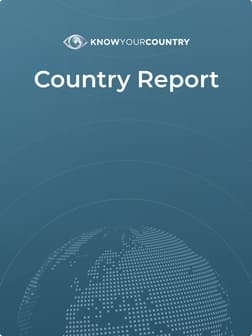
Panama Country Summary
Sanctions
Lower Concern
FATF AML Deficient List
Higher Concern
Terrorism
Lower Concern
Corruption
Higher Concern
US State ML Assessment
Higher Concern
Criminal Markets (GI Index)
Higher Concern
EU Tax Blacklist
Higher Concern
Offshore Finance Center
Higher Concern
Please note that although the below Summary will give a general outline of the AML risks associated with the jurisdiction, if you are a Regulated entity then you may need to demonstrate that your Jurisdictional AML risk assessment has included a full assessment of the risk elements that have been identified as underpinning overall Country AML risk. To satisfy these requirements, we would recommend that you use our Subscription area.
If you would like a demo of our Subscription area, please reserve a day/time that suits you best using this link, or you may Contact Us for further information.
Anti Money Laundering
FATF Status
Panama is no longer on the FATF List of Countries that have been identified as having strategic AML deficiencies
Latest FATF Statement - 27 October 2023
The FATF welcomes Panama’s significant progress in improving its AML/CFT regime. Panama strengthened the effectiveness of its AML/CFT regime to meet the commitments in its action plan regarding the strategic deficiencies that the FATF identified in June 2019 related to (1) strengthening its understanding of the national and sectoral ML/TF risk and informing findings to its national policies to mitigate the identified risks; (2) taking action to identify unlicensed money remitters, applying a risk-based approach to supervision of the DNFBP sector and applying effective, proportionate, and dissuasive sanctions against AML/CFT violations; (3) verifying updated beneficial ownership information by obliged entities, establishing mechanisms to monitor the activities of offshore entities, assessing the existing risks of misuse of legal persons and arrangements to define and implement specific measures to prevent the misuse of nominee shareholders and directors, and allowing timely access to adequate and accurate beneficial ownership information; and (4) using FIU products for ML investigations, demonstrating its ability to investigate and prosecute ML involving foreign tax crimes and providing constructive and timely international cooperation with such offence, and continuing to focus on ML investigations in relation to high-risk areas identified in the NRA and MER. Panama is therefore no longer subject to the FATF’s increased monitoring process.
Panama should continue to work with GAFILAT to sustain its improvements in its AML/CFT system.
Compliance with FATF Recommendations
The latest follow-up to the Mutual Evaluation Report relating to the implementation of anti-money laundering and counter-terrorist financing standards in Panama was undertaken in 2019. According to that Evaluation, Panama was deemed Compliant for 15 and Largely Compliant for 23 of the FATF 40 Recommendations. It was also deemed Highly Effective for 0 and Substantially Effective for 2 with regard to the 11 areas of Effectiveness of its AML/CFT Regime.
Sanctions
There are no international sanctions currently in force against this country
Criminality
Rating |
0 (bad) - 100 (good) |
|---|---|
| Transparency International Corruption Index | 33 |
| World Bank: Control of Corruption Percentile Rank | 28 |
Corruption is a major issue in Panama, with the country ranking 108 out of 180 in the 2023 Transparency International Corruption Perceptions Index. Allegations of corruption span both the public and private sectors, with reports of bribery and procurement irregularities undermining government transparency and investor confidence. Despite some legislative efforts to improve the business climate and tackle corruption, such as the 2019 public-private partnership law, systemic issues persist, including a lack of accountability and ineffective enforcement of anti-corruption laws.
Economy
Panama's economy is characterized by rapid growth, with a GDP increase of nearly 11 percent in 2022 and 7.3 percent in 2023, driven by trade, construction, and logistics. However, the country faces challenges such as a recent downgrade in its credit rating to non-investment grade, high levels of unemployment, and significant income inequality, which complicate its investment climate. Despite these issues, Panama remains an attractive destination for foreign direct investment, bolstered by its strategic location and the Panama Canal's profitability.
Panama's investment climate is generally favorable, bolstered by its strategic location, the Panama Canal, and a dollarized economy that attracts significant foreign direct investment (FDI). However, the country faces challenges such as corruption, social unrest, and a recent downgrade to non-investment grade by Fitch, which has created uncertainty for investors. Despite these issues, Panama continues to implement policies aimed at attracting multinational companies and enhancing its investment appeal.

Buy Full Panama Report
$125 one time payment
- Risk Analysis
- Corruption
- Economy
- Sanctions
- Narcotics
- Executive Summaries
- Investment Climates
- FATF Status
- Compliance
- Key Findings
